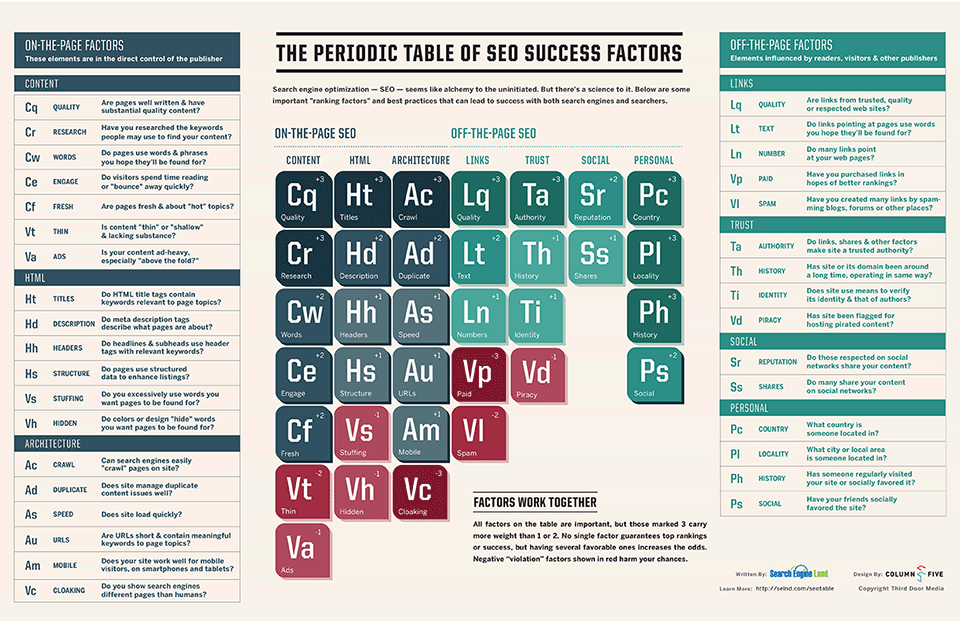In a recent webinar sponsored by Act-On, Thorin McGee, Editor in Chief of Target Marketing Magazine sat down with search engine marketing guru Kevin Lee to talk about how marketers can improve SEO for alternative types of content. That includes video, infographics, images, PDFs, and more. In this five-part blog series, you’ll get expert insights and best practices for developing the right types of content for your brand and making sure they get discovered by your target audiences. Part one is an introduction to SEO for alternative content types, and a discussion of what marketers need to know in order to optimize this content for search engines. This transcript has been edited for brevity.
 THORIN MCGEE: As the Internet has grown and evolved, the number of different people using multiple types of devices to access the Internet has also grown. With the rise of high bandwidth access and the mobile internet, nontraditional content has become a bigger and bigger part of the experience. Google and the other search engines have seen this. And in the ever-expanding quest for the perfect algorithm to deliver the ideal search results to their users, they seem to be continually boosting the value of nontraditional content. In short, more searchers want more visual content, more timely content, things that aren’t your traditional article-with-images. And the search engines are willing to give you a boost if you provide it. If you aren’t taking advantage of that, then you’re missing a lot of your SEO opportunity.
THORIN MCGEE: As the Internet has grown and evolved, the number of different people using multiple types of devices to access the Internet has also grown. With the rise of high bandwidth access and the mobile internet, nontraditional content has become a bigger and bigger part of the experience. Google and the other search engines have seen this. And in the ever-expanding quest for the perfect algorithm to deliver the ideal search results to their users, they seem to be continually boosting the value of nontraditional content. In short, more searchers want more visual content, more timely content, things that aren’t your traditional article-with-images. And the search engines are willing to give you a boost if you provide it. If you aren’t taking advantage of that, then you’re missing a lot of your SEO opportunity.
This is good for marketers. After all, a picture is worth a thousand words. Imagine how valuable a video can be. But how can you make sure you have the right content and that you’ve positioned it right to be seen by Google?
 Today we’re joined by Kevin Lee to answer exactly that. Kevin has been doing search engine marketing since 1995, and he founded the search engine marketing firm Didit in 1996. He was a founding board member of the Search Engine Marketing Professionals Organization and its first elected chairman. Kevin is also active as a speaker at top SEO conferences including SES and SMX, and he educates the next generation of digital marketers by lecturing at NYU, Columbia, Fordham, and Pace Universities. He’s written several books including Search Engine Advertising: Buying Your Way to the Top to Increase Sales. In short, Kevin is known to be one of the smartest minds in search marketing. And he’s done a couple of these very enlightening webinars with us in the past. I’m really excited to have him with us today.
Today we’re joined by Kevin Lee to answer exactly that. Kevin has been doing search engine marketing since 1995, and he founded the search engine marketing firm Didit in 1996. He was a founding board member of the Search Engine Marketing Professionals Organization and its first elected chairman. Kevin is also active as a speaker at top SEO conferences including SES and SMX, and he educates the next generation of digital marketers by lecturing at NYU, Columbia, Fordham, and Pace Universities. He’s written several books including Search Engine Advertising: Buying Your Way to the Top to Increase Sales. In short, Kevin is known to be one of the smartest minds in search marketing. And he’s done a couple of these very enlightening webinars with us in the past. I’m really excited to have him with us today.
And now without further delay, Kevin, please go ahead.
KEVIN LEE: Great. Thanks so much, Thorin. I appreciate the kind words. We’ve certainly got a pretty broad area to cover. The way I structured the presentation is really to focus on the best practices of video primarily, because a lot of the best practices for video also relate further down the line to images, PDFs, and so on. I want to focus most on the visual elements of SEO, which tend to be under-invested in by a lot of marketers out there.
Clearly, when we talk about video and imagery within the search results, which is the search engine results page (SERP), any time there is either a thumbnail of a video or a still image in the search engine results page, it draws the searcher’s eye. That means that if you could have ranked for something anyway, and that page has either an image on it that Google likes or a video that Google can identify, there’s a chance that Google or Bing might actually show that image or the thumbnail of a video alongside your highly ranked listing.
So the chances of you getting a click go up several orders of magnitude, even if you don’t happen to have top position. Because the consumer’s eye is drawn to the image or the thumbnail, and they know the difference obviously, as all of you do, because if you see the little triangle in the middle there, you know it’s a thumbnail and not just a screengrab of an image. So this is the reason why video SEO has become increasingly popular over the last couple of years.
 We have worked with clients over the years helping to guide strategy, and from that strategy guide tactics for video SEO or even traditional SEO. A useful construct is to go through the Ws as well as a couple of Hs.
We have worked with clients over the years helping to guide strategy, and from that strategy guide tactics for video SEO or even traditional SEO. A useful construct is to go through the Ws as well as a couple of Hs.
- Who? Audience first: the search engineer’s credo
- Where should content live?
- What content will you create or use?
- How will you decide on video and other forms of content?
- When will you release content?
- Why will people share your content? (Social media can be an SEO accelerant.)
So you can think about SEO from a content-centric mindset, which is what folks like Matt Cutts (who’s really sort of the voice of Google with regards to organic algorithms.), recommend. He always espouses content first. Great quality content results in higher rankings more regularly than non-great content.
So if you think about content and then you think about who’s consuming it, where it should live, what content you create, how you decide between types of content, and then come up with an editorial calendar, that’s really great. Then you have to think about how you’ll promote it.
Certainly folks like Thorin (and the teams at any publisher or broadcaster) can speak to the benefits of having an editorial calendar. It keeps you focused on what you’re creating and why you’re creating it and when you’re going to go ahead and release it. So if SEO is important to your organization, coordinate with your team (whether they are an agency or an in-house team) and try to put together an editorial calendar.
It’s worth noting that there are a lot of constructs from a tactical perspective in understanding ranking factors in SEO. One of the ones that a lot of people in the industry like to use is the Periodic Table of SEO Success Factors from SearchEngineLand.
This is a nice way of breaking up the on-page criteria that assist in ranking and the off-page criteria that assist in ranking. Because it’s not just about the content, it’s also about all the ranking signals that help Google or Bing or Yandex or Baidu understand the difference between your content, which is quite similar to a lot of other content.
So it’s that tiebreaker vote or that tiebreaker signal that the search engine has about your content in comparison to all of your competition that really can make a huge difference. I recommend you go ahead and get that chart and start making changes right away.
 Stay tuned for part 2 of this series, where you’ll get best practices for optimizing video for SEO. Be sure to watch the webinar to get the whole story. And if you’re looking for information on optimizing content for search, check out this eBook: How to Make Any Content SEO-Friendly.
Stay tuned for part 2 of this series, where you’ll get best practices for optimizing video for SEO. Be sure to watch the webinar to get the whole story. And if you’re looking for information on optimizing content for search, check out this eBook: How to Make Any Content SEO-Friendly.

